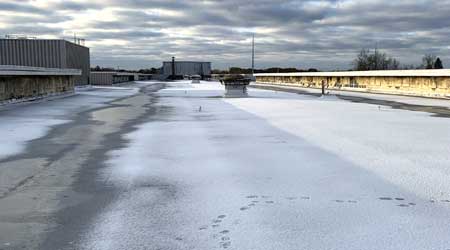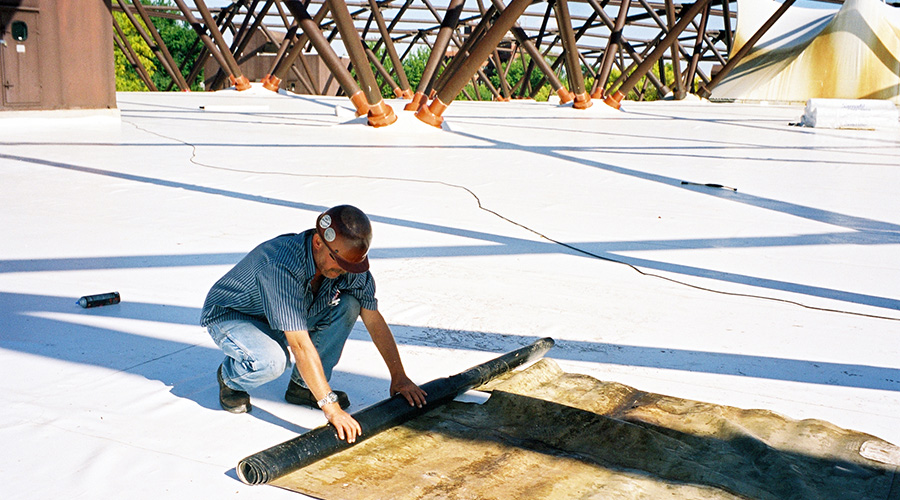 Doing regular inspections after snow or ice can help prevent costly repairs during the winter months.John D'Annunzio
Doing regular inspections after snow or ice can help prevent costly repairs during the winter months.John D'AnnunzioWinter Roofing Hazards: Snow, Ponding, Freeze/Thaw
It's always a good idea to clear snow off a roof, if possible. This can prevent all kinds of problems, including structural damage to the facility itself.
One element that can have a negative impact on roof assemblies is precipitation. When precipitation occurs as mercury is falling, the result is ice or snow. Without proper roof maintenance, these can create havoc with the roof assembly. The problems associated with snow and ice on roof assemblies can vary.
The most significant concern is excessive snow load, which can lead to structural damage or full roof collapse. This condition can occur if there is a heavy snowfall coupled with freezing temperatures that lead to a snow/ice mixture that could exceed the snow load of the structural deck. The facility manager should be aware of the snow load rating and, in the case of a heavy downfall, it may be prudent to pay a contractor to remove snow from the roof surface. If snow has to be removed, be certain that roof materials (membrane and flashings) are not damaged during the process.
Best practice is to remove excess snow at the top layer. Any damage to the roof materials that occurs during this process should be repaired immediately.
Another potentially negative impact of the freeze/thaw cycle: When snow and ice melt, they revert back to water. Snow and ice can melt during lower temperature days if the roof is exposed to continual sunlight. The melting process could leave a substantial amount of ponding water on the roof surface. Ponding water adds additional weight to the roof surface, can find its way into the roof system through even minor openings, and can lead to growth of vegetation and fungi on – and into – the roof surface.
Most roof membranes require the removal of ponding water from the roof surface within 48 to 72 hours of a rainfall. Once the snow or ice melts, it is important that the accumulated water is allowed to properly drain from the roof surface. This could be a substantial amount of water for the drains to process at one time. It is imperative that all roof drains are free of debris at the surface and that the drain line is not clogged at any point. It is also important to ensure that all drain connections are sealed and in working condition.
The roof material around the drain should be thoroughly inspected for openings and splits. There is typically a combination of materials applied in these areas, and openings could be created from differential movement of any membrane, piping, or metal materials. These areas are also points of continual water accumulation, making them highly susceptible to roof leaks.
Best practice is to inspect the roof drains throughout the year to ensure they are in proper working conditions. If there is indication of clogging at any of the drains, they should be inspected with a camera to identify the clogged area and then properly cleaned out. It is also recommended to inspect all drain strainers prior to a heavy snowfall to ensure there is no presence of debris impeding the drainage.
The most vulnerable points on a roof system are at flashings and penetrations. These areas are vulnerable to roof leaks from snow or ice accumulation that settles around the higher surface elevations. Moisture can enter the structure from openings and splits in the materials or from openings at terminations or coverings.
Related Topics:














